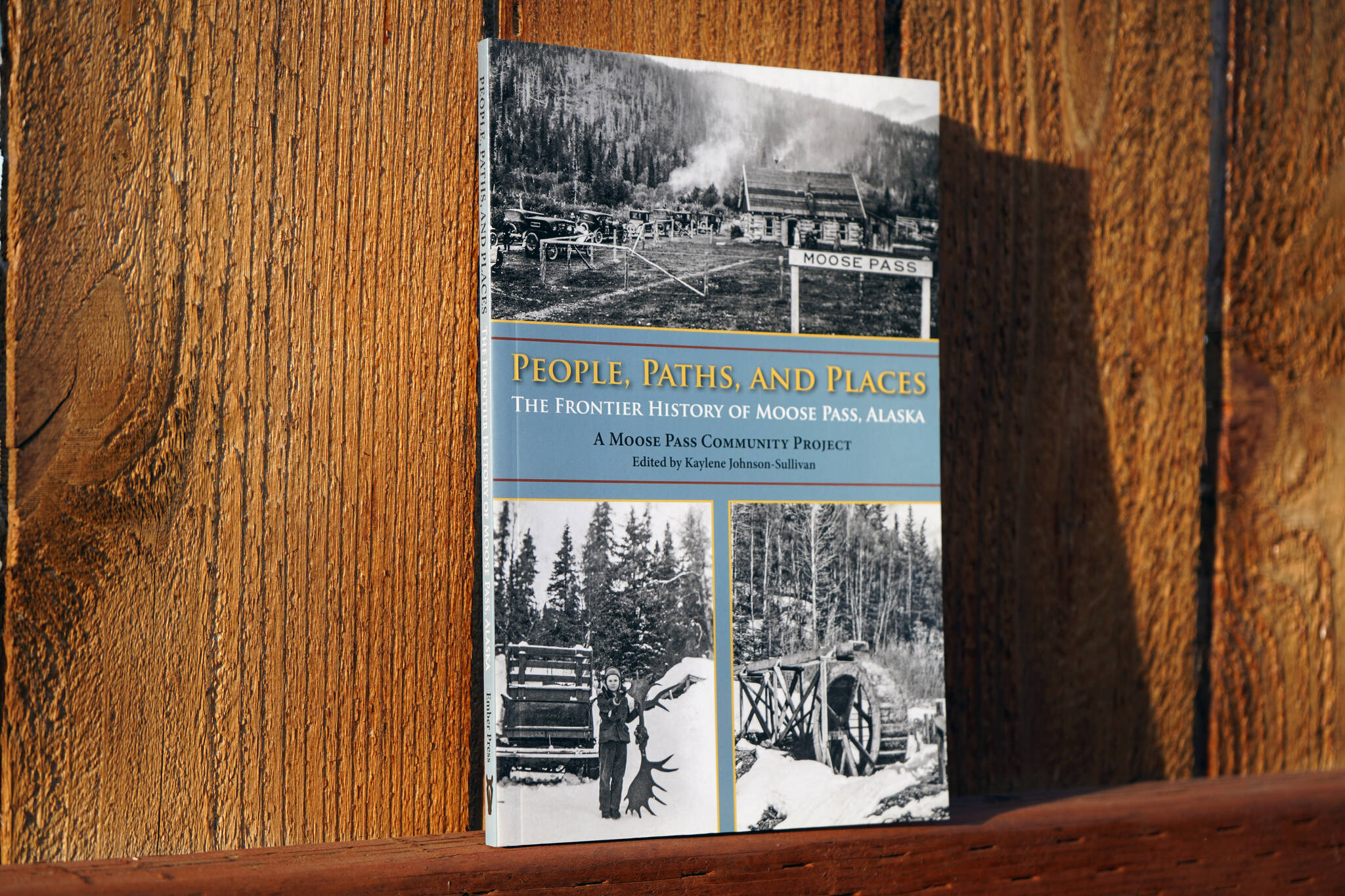Since reading Charlie Stephens’ autobiographical “Passion Over Pain” last year, I’ve been charmed by its depiction of his hometown, Moose Pass. That feeling solidified when I had a great time visiting the town — for the first time I can recall in my 27 years on the Kenai Peninsula — earlier this year. That’s why I was eager to read “People, Paths, and Places: The Frontier History of Moose Pass, Alaska,” an interesting primer on the community’s history made by the people who live there.
The book, described on its cover as “A Moose Pass Community Project,” features the work of students at Moose Pass School and integrates further stories pulled from a community newspaper published in the late 1930s through much of the 1940s. As the title suggests, its a glimpse at some of the largest figures, locations, and ways of getting around in Moose Pass, mostly confined to the 1930s and 1940s.
Introductory sequences in the text explain that the project came about initially as a series of informational panels installed at the Moose Pass Public Library, under a grant from the Kenai Mountains-Turnagain Arm National Heritage Area, their content written by students. The project grew, especially with the discovery of the Moose Pass Miner archives, and became a full book, published in 2021.
When I was taking journalism classes in Anchorage, I skipped magazines in favor of podcasting, but “People, Paths, and Places” feels to me like it invokes a similar feel. The book is stuffed with short stories about individual places or ideas, sandwiched between larger features.
Featured are names and locations I recognize, even from my relatively limited exposure to the community. It covers the origins of the town — including the different stories of its name — and the people who made it what it is, like Leora Roycroft, the first postmaster and a driving force behind opening the school.
As a reporter, I got a real kick out of the depictions of the small town newspaper and its editor Lois Allen. The book describes lines of people waiting to get their copies fresh from the press, copies traded for firewood, and reporting about all the hottest talk of the town — like a sprained wrist.
“May 12, 1939,” one excerpt in the book reads. “The Crown Point mining company is working the road to their property. That is the blasting you hear.”
While people and places are easy to understand, it was the “paths” that caught me off guard. The book describes the development of roads and railways, mining trails and ill-advised travel over ice in a way that makes the realities of history easier to grasp — if yet somehow harder to believe. Trips up the road to Cooper Landing or Hope in the 1940s didn’t resemble a modern drive on the Seward Highway.
“People, Paths, and Places” is a breezy read — I finished it in a sitting — and a special look at a distinct community. It’s easy to imagine similar treatment given to any community on the Kenai Peninsula, and I’d love to read that just as well.
“People, Paths, and Places: The Frontier History of Moose Pass, Alaska,” was published in 2021 by Palmer-based Ember Press. The copy read for this review was purchased from River City Books in Soldotna.
Reach reporter Jake Dye at jacob.dye@peninsulaclarion.com.

